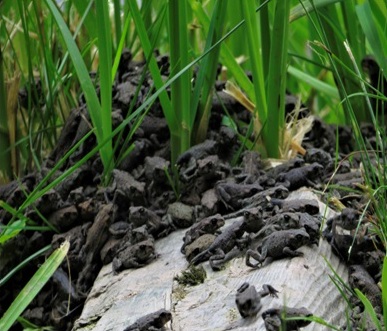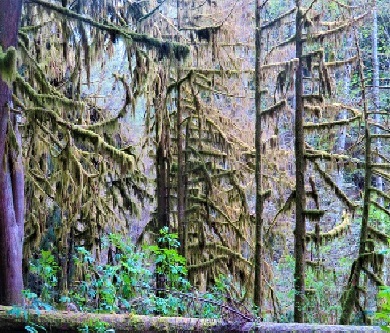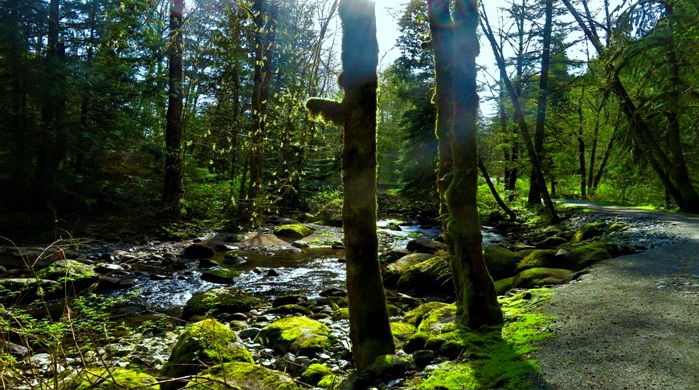One of the unexpected joys that emerged for me during the last couple of years since having retired is leading small groups of older adults on nature walks in the many forests and woodlands that grace the Lower Mainland. As an amateur naturalist (I use the word amateur in its original sense, from the Latin, amator, literally, one who loves, in this case, nature), I delight not only in observing and learning about any and all aspects of the natural world and sharing what I learn with others, but in deepening our connection to and, hopefully, respect, if not reverence for, the natural world in all its myriad forms.
The relentless speed and noise of urban life has somewhat fragmented our collective attention, exhausted our senses, and perhaps even dulled our capacity for awe. Returning anew to the natural world, especially for us as older adults, holds the promise of coming back to the sense of wonder that first enthralled us as younger persons: now, in the ripening of our latter years, this seems tempered with the bittersweet knowledge of the fragility of it all, making each green space, forest, and tree, no matter how small or common, a treasure to cherish. And we consider, too, in witnessing the sorrowful destruction of the natural world, how, even in the midst of a large and ever-expanding metropolitan area such as ours, nature nonetheless endures.
The pleasures of a stroll through the local forests have been made all the more so by virtue of sharing the experience with others who so generously share their love of the natural world with one another. All within an hour of the downtown core, we’ve glimpsed into moments of the lives of some of the creatures who call these forests home.

We’ve glimpsed a lone and endangered Western Painted Turtle basking in the sun and watched a pair of similarly endangered Oregon Tree Snails meander their oozy way along a mossy log. Wondered at a beaver’s singularity of purpose, oblivious to us walking alongside the woodland pond, methodically nibbling the bark off alder branches. We stood in awe beneath the sweeping branches of ancient cedar trees and stood, again in awe, beneath the legions of snow geese flying in wavering vees south from the Arctic. We saw all number of birds and heard the calls and songs of others still. And we gave a respectfully wide berth to a swimming bear.

Then, there is the humble workhorses of the forest, that is, the fungi and lichen: having endured almost unchanged through the earth’s five climate catastrophes and are thereby a testament to the sheer power and intelligence of symbiotic cooperation. It is a wonder that, although largely invisible and neglected, without them, the forests (not to mention most of the world’s plant life) would wither and die. Common, unnoticed, and essential.
The forest offers abundant chances to pause, devote our full attention, and ponder: How is it that the skunk cabbage can melt the spring snow around it? How do conifers avoid self-pollination? Why is it that the red of the larch cone in spring is identical to the red of the mountain ash bud and to the belly stripe of the woolly bear caterpillar? Why does the hummingbird gather spider webs? How do the salmon nourish a forest? By what mechanism do the flowers close at night? And open in the morning?
Other kinds of questions, too, ask for our attention ~ what is it we yearn for in our seemingly primal need to be with and in the natural world? What is our responsibility to nature? What, in this age of the Anthropocene, can be our best hope? How do we mitigate despair for its destruction?

Whether it’s coming upon a culturally modified cedar or any one of a number of other plants, ferns, or shrubs traditionally harvested for food and medicine, each encounter reminds us yet again of the tremendous wealth and generosity of these forests, their surrounding waterways and wetlands particular to this river delta, that have unfailingly supported the flourishing of diverse human cultures to the present day.
What began as a casual gathering of older adults for walks in the local parks, both an easy way to socialize during Covid as well as, for me, a tentative exploration of possibility in the early days of retirement, has evolved into a community woven together by a love of the natural world, no matter how small, common, fragile, or fleeting. Like a healthy forest, our community is diverse, mutually cooperative, and thereby resilient and, like any tree in that forest, I count myself fortunate to be among them.
Monica Franz is a recently retired therapist in private practice. She currently teaches courses at Simon Fraser University’s Liberal Arts 55+ program. She also facilitates nature walks. Photos for this article by Bill Stovin.


